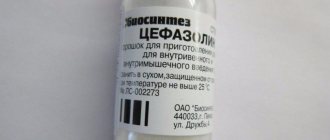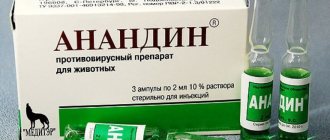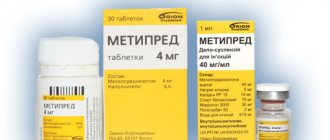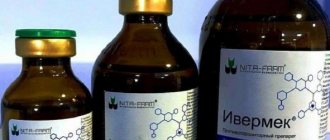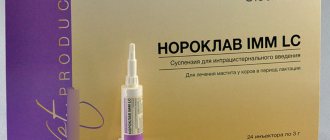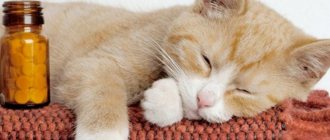5729Pavel
Often, treatment for cats does not bring the desired effect, and then the veterinarian decides to prescribe an antibiotic to speed up the recovery process. Sumamed for cats is a common broad-spectrum antibiotic. Its main purpose is to fight various kinds of infections, which most often affect the respiratory tract, but not only, it is also quite effective in the treatment of chlamydia, toxoplasmosis and rhinotracheitis, which often turns into pneumonia in cats if not treated correctly.
The active ingredient in Sumamed is azithromycin, and it is produced in several forms, which is quite convenient in selecting treatment for the animal. Release forms :
- suspension,
- pills
- capsules.
© shutterstock
Many veterinarians prefer to prescribe Sumamed in suspension for upper respiratory tract infections.
Classification
Antibiotics for cats (as for people) are classified according to several criteria.
By type of action
According to the type of action, antibacterial drugs are:
- Bactericidal are fairly strong antibiotics that destroy bacteria. They are usually used only as prescribed by a veterinarian to treat serious illnesses. For some infections (for example, staphylococcus), taking such medications is prohibited, since the destroyed bacteria can clog the urethra and lead to the development of urolithiasis.
- Bacteriostatic - milder drugs that do not allow bacteria to develop and multiply. As a result of their exposure, bacteria die and are eliminated from the animal’s body.
According to the spectrum of action
Antimicrobial drugs according to their spectrum of action can be:
- highly specific – destroy a specific type of pathogenic microorganisms;
- broad spectrum of action - kills several types of bacteria at once.
By chemical composition
Antibacterial veterinary drugs, like “human” antibiotics, are classified according to their chemical composition (according to the active substance):
- penicillins;
- chloramphenicol;
- cephalosporins;
- macrolides;
- aminoglycosides;
- tetracyclines;
- glycopeptides;
- nitrofurans;
- sulfonamides;
- fluoroquinolones;
- carbapenems;
- lincosamides;
- polymyxins and others.
This is interesting! More than 25 types of antibiotics are currently used in veterinary medicine.
By location of impact
Based on the site of exposure, all antibiotics are divided into the following types:
- general drugs;
- topical drugs.
External treatment of damaged tissues is usually done with ointments and gels, tablets and solutions are used for intravenous and intramuscular injections, and for bacterial conjunctivitis, antibiotic eye drops are prescribed.
Pros and cons of drugs
Although antibiotics are leaders in the treatment of many infections, the use of these drugs has its advantages and disadvantages.
| Pros of using antibiotics | Disadvantages of using antibiotics |
| Reducing the treatment time for the disease | Decrease in the body’s overall resistance to various infectious diseases as a result of long-term use of antibiotics |
| Rapid improvement in your pet's condition | Accustoming bacteria to the components of the drug and reducing the effectiveness of its effects due to too long use |
| High efficiency even with very high concentrations of bacteria in the body | Additional medications that restore the gastrointestinal microflora are often required |
| Reducing the risk of complications from the underlying disease | Exceeding the dosage of antibiotics can lead to complications and consequences that are extremely dangerous for the body. |
| Convenience of administration due to various forms of drug release | |
| Wide spectrum of action of drugs for the simultaneous destruction of several types of bacteria | |
| Short course of administration due to the high effectiveness of the drugs |
It is important! Side effects from antibiotic treatment will be minimal if you choose the right drug and calculate its dosage.
Basic information about the use of the drug in cats and other species of animals
According to the instructions for use of the drug, azithromycin is a new generation azalide or macrolide antibiotic
. Macrolide antibiotics act by inhibiting protein synthesis in susceptible bacteria and are generally considered bacteriostatic. New generation macrolides are characterized by high concentrations in tissues and relatively lower concentrations of the antibiotic in blood serum.
Azithromycin is concentrated in polymorphonuclear leukocytes, which gravitate to the site of infection and inflammation during chemotaxis. Phagocytosis by polymorphonuclear leukocytes exposes intracellular pathogens to very high, potentially lethal concentrations of antibiotics. In particular, azithromycin has an increased half-life from tissues. Long-term high concentrations of azithromycin at the site of infection and inflammation allow once-daily dosing and may shorten the duration of treatment.
Indications for use
Many diseases can be successfully treated only with the use of antibacterial drugs. So, antibiotics for cats are usually prescribed to treat the following diseases:
- tuberculosis;
- giardiasis;
- pneumonia;
- pyelonephritis;
- cystitis and urethritis;
- feline herpes;
- various ear and eye infections;
- bacterial gastritis;
- purulent and bacterial lesions of the skin;
- intestinal infections;
- leptospirosis;
- rhinitis (upper respiratory tract infections);
- pyometra (inflammation in the uterus due to infection);
- urolithiasis disease.
Antibiotics must be prescribed after surgery (including after sterilization). They are also given to cats suffering from cancer, because antibacterial drugs prevent the spread of infection to the affected organs and tissues.
What antibacterial agents are most often prescribed to cats?
Without contacting a specialist, it is extremely difficult to select the necessary antibiotic and calculate the dosage. Sometimes cats are given a sensitivity test to determine the resistance of a particular type of bacteria to the drug. Most often, veterinarians prescribe one of the following antimicrobial agents to treat cats.
Amoxicillin
Medicines containing amoxicillin belong to the penicillin group and are used to fight infections of the urinary tract, bones, skin, upper respiratory tract and lungs. These antibiotics can also be given to cats after surgery to prevent inflammation.
Commercial names of drugs containing amoxicillin:
- Amoxivet;
- Amoxil (tablets);
- Clamoxil LA;
- Betamox LA (suspension) and others.
Amoxicillin/clavulanic acid
Drugs containing amoxicillin and clavulanic acid are very effective. They are used to treat various infections of the skin, respiratory tract, joints, gastrointestinal tract, mucous membranes, and genitourinary organs in cats, as well as to prevent complications after surgery.
Commercial names of drugs containing amoxicillin:
- Xiclav;
- Sinulox;
- Amoxiclav.
Xiclav is available only in tablet form, while Sinulox and Amoxiclav are available both in tablets and as a solution for injections. In severe cases of the disease or, for example, in cases of urolithiasis, antibiotics for cats are prescribed only in the form of a suspension.
Azithromycin
Azithromycin is a broad-spectrum antibiotic that belongs to the group of macrolides. Azithromycin is used to treat infections of the genitourinary system, respiratory system, gastrointestinal tract and skin. The drug is safe for animals, so it is prescribed to pregnant and lactating cats.
Commercial names of drugs containing azithromycin:
- Avimecin;
- Azikan;
- Azitronit (available in the form of injection solutions);
- Sumamed (available in tablets).
Gentamicin
Gentamicin is an antibiotic of the aminoglycoside group. It is used to treat bacterial infections of the respiratory tract, bones and joints, genitourinary system, ears, eyes. Gentamicin is also prescribed for peritonitis.
This antibiotic is a toxic drug and is therefore prescribed only in the most severe cases. Improper use of the medicine may cause hearing damage. Gentamicin is not prescribed to weakened and elderly cats, as well as animals with kidney disease.
Commercial names of drugs containing gentamicin (produced in the form of solutions for intramuscular and subcutaneous administration):
- Gentaprim;
- Ghentam;
- Gentavet.
Enrofloxacin
Enrofloxacin belongs to the group of fluoroquinolones. Most often, it is used to treat infectious diseases of the skin and genitourinary system in cats. An overdose of this drug can lead to destruction of the retina.
It is important! Enrofloxacin is not prescribed to kittens.
Enrofloxacin has a bitter taste, which causes excessive salivation. For this reason, it is administered to cats only in the form of injections.
Commercial names of drugs containing enrofloxacin:
- Enroxil;
- Baytril;
- Enromag.
Tylosin
Tylosin is considered a low-toxic antibiotic that destroys most dangerous bacteria: streptococci, chlamydia, staphylococci, mycoplasma and others. It is prescribed for infections of the lungs, respiratory tract, joints, and intestines.
Tylosin is available only in the form of injection solutions (50 or 200 mg per 1 ml). For cats, veterinarians recommend purchasing Tylosin 50.
It is important! This drug is used only in veterinary medicine.
Ceftriaxone
Ceftriaxone is an antibiotic of a number of cephalosporins, it is used to treat both animals and humans. Ceftriaxone has a detrimental effect on streptococci, pneumococci, staphylococci, E. coli and other microorganisms.
Used for infectious lesions of nerve and bone tissues, gastrointestinal tract, genitourinary system, and respiratory organs. This antibiotic is often prescribed to cats after bites from other animals and to prevent complications after operations.
It is important! The drug should not be used for kittens, pregnant or lactating cats.
Ceftriaxone is produced in powder form, which must be diluted in an injection solution before use. The drug must be combined with anesthetics, since the administration of ceftriaxone is very painful.
Commercial names of drugs containing ceftriaxone:
- Rocephin;
- Loraxone (“human” antibiotics);
- Ceftrivet (antimicrobial drug for animals).
Convenia
Convenia is an antimicrobial “cat” drug, the active ingredient is cefovecin (a group of cephalosporins). It is prescribed to get rid of acute gum and periodontal infections, treat diseases of the urinary tract, soft tissues, and skin.
The antibiotic Convenia is intended for subcutaneous administration. The packaging of this medicine includes 2 bottles: powder with the active substance and a special solvent.
Tetracycline
Antibiotics that include tetracycline are available in the form of tablets, drops and ointments. Tetracycline tablets are used to treat pneumonia, borreliosis, genitourinary tract infections, otitis media, and food poisoning. It also helps greatly in the initial stages of peritonitis.
It is important! Tetracycline is contraindicated in cats during lactation, as it quickly passes into milk and can harm the health of kittens.
Tetracycline drops and ointments are used to treat infections of the eyes, skin, burns and purulent wounds.
Analogues of the drug Tetracycline in tablets containing the same active ingredient are Oxytetracycline and Chlortetracycline.
Possible restrictions
A reduction in the dose of the drug is required when the female is “in position”.
Having a strong antibacterial effect, Azithromycin can also cause harm. And the medicine is especially dangerous for cats that have been diagnosed with chronic liver pathologies, kidney disorders and hypersensitivity to any component of the antibiotic. Pregnant and lactating purrs should be given Azithromycin especially carefully, strictly adhering to the doses prescribed by the veterinarian. And most often during this period of a cat’s life, the dosage is 1.5-2 times less than usual.
Possible side effects
Treatment with antibiotics may be accompanied by side effects, most often this occurs due to the wrong choice of medication, violation of dosages, or individual intolerance to the drug.
The most common side effects in cats after taking antibacterial agents include:
- diarrhea;
- vomit;
- skin itching and rash;
- deterioration of the hair condition up to its loss;
- apathy and drowsiness;
- convulsions;
- damage to the kidneys, liver and other internal organs;
- hearing loss.
As a result of therapy, both harmful and beneficial microorganisms are often destroyed in the cat’s intestines. Therefore, along with antibiotics, veterinarians prescribe probiotics to their patients to restore intestinal microflora.
Undesirable consequences
When the antibacterial drug is used correctly, the therapy proceeds well and the cat recovers quickly without any negative consequences.
But in exceptional cases or in case of an overdose of Sumamed, a rash may appear on the cat’s body, the pet will experience frequent loose stools, swelling, vomiting and even temporary hearing loss. If you observe the listed phenomena in your pet, you should urgently stop therapy and take him to a veterinary clinic, where the veterinarian will determine the further advisability of taking Sumamed and carry out symptomatic measures. https://youtube.com/watch?v=qutEA_QDSTg
Taking medication
After a thorough examination of the cat and diagnosis, the veterinarian will prescribe tablets or intramuscular injections. Each of these manipulations will require certain skills from the owner.
How to give an injection
When prescribing an antimicrobial drug by injection, the first injection of the cat must be given in the clinic. This will help assess the body’s response to the medicine, provide emergency assistance if necessary, and select another antibacterial agent.
If there were no adverse reactions during the first injection, the owner can do the remaining injections independently.
To properly give your cat an injection, you need to follow these recommendations:
- The cat is secured in your arms so that during the procedure it cannot escape.
- The required amount of medicine is drawn into the syringe (the solution should not be cold).
- The needle is inserted into the thigh to a depth of 1 cm. But the injection can also be given at the withers, because this place in cats is less sensitive to punctures. In this case, the skin on the withers needs to be squeezed, and the needle must be inserted so that it is inside, then the medicine must be injected.
- The injection site does not need to be treated with an alcohol solution.
- Sometimes after an injection, a cat may limp or tuck its paw. There is nothing dangerous in this situation; lameness usually goes away within 1-2 days.
How to give a pill
Sometimes it can be difficult for an owner to get their pet to swallow a pill. In this case, you can use a special device - an introducer (tablet dispenser) for pets.
The principle of operation of the device is the same as that of a conventional syringe. The tablet is fixed in a rubber tip, which is carefully inserted deep into the cat’s mouth and then the drug is squeezed onto the root of the tongue. You need to close the animal's mouth to provoke a swallowing reflex.
Antibiotic tablets can also be given to your cat along with a small amount of food. True, then you will have to make sure that the pet does not spit out the medicine.
It is important! Veterinarians recommend giving your cat the tablets completely, without crushing them into powder.
Many cat diseases are practically incurable without the use of antibiotics. But treating a cat with potent drugs without a veterinarian’s prescription is a real crime against it.
A loving owner must remember that the life and health of his pet depends on the correct choice of antibiotic, its dosage and duration of use.
